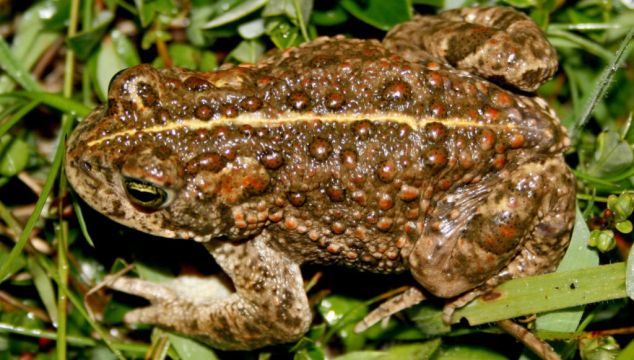A rescue operation is underway in west Kerry to save Ireland’s only native toad, the natterjack toad as the ponds dry up in soaring temperatures.
The season started well for the natterjacks, in the Castlegregory and Castlemaine harbour area, with lots of ponds full of water. Spawning and tadpole formation - erratic last year after the dry spring - went well.
‘This protracted dry spell, however, is causing many breeding sites to dry up early, Dr Ferdia Marnell of the National Parks and Wildlife Service said.
A dune fire in the Maherees was adding to worries on Tuesday.
The natterjack which is only naturally found in Kerry is a boom and bust species, breeding prolifically one year and not at all the next.
It is also highly endangered due to changes in farming practice. Climate change with unstable weather patterns is also adversely affecting the toad. .
Last year conservation rangers with the NPWS collected tadpoles for a toadlet captive breeding programme at the Dingle Aquarium and Fota Wildlife Park.
Last July thousands of toads reared in captivity for the first time were released back into the wild.
Some tadpoles were collected in May of this year also and are already metamorphosing and others have metamorphosed naturally.
Around 1,000 toadlets now ‘with legs under them’ in Dingle Oceanworld Aquarium are ready to be released back into the ponds, dune pools and farmer’ dug ponds in Inch, Cromane, and along the Maharees, Kevin Flannery director of Dingle Oceanworld said.
‘But it’s too warm and too dry. We can’t leave them go right now,’ Mr Flannery said.
He is waiting for the weather to turn on Friday and for rain to fall to release them.
Conservation rangers are now collecting remaining tadpoles and bringing them to the aquarium,
Already there are fears a number of ponds will have dried up with the hotter than normal temperatures in recent days.
The toads are among around 10 species unique to Kerry, he added, and it is now a race against time to rescue most of this year’s crop.
Mr Flanenry believes the toad, with its distinctive yellow stripe, also found on the Iberian Peninsula, came into Kerry on ships bringing wine and brandy in part of the thousands of years connection between south and west Kerry and Spain.
A second school of thought says the toad has been here since the end of the last ice age 11,000 years ago.
A number of farmers in west Kerry are part of an agricultural scheme to dig ponds and oversee habitats to help protect the toad and ensure its survival.







